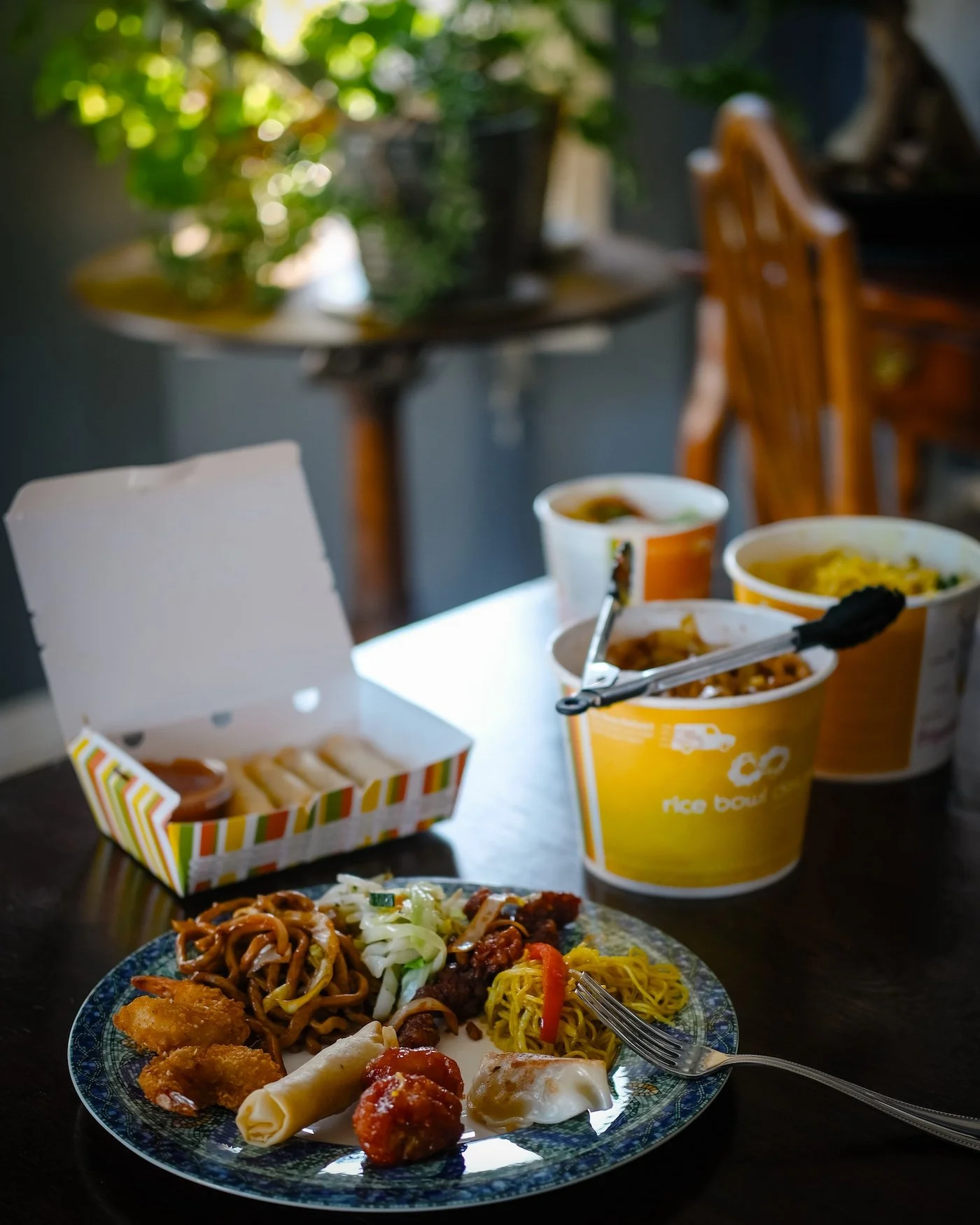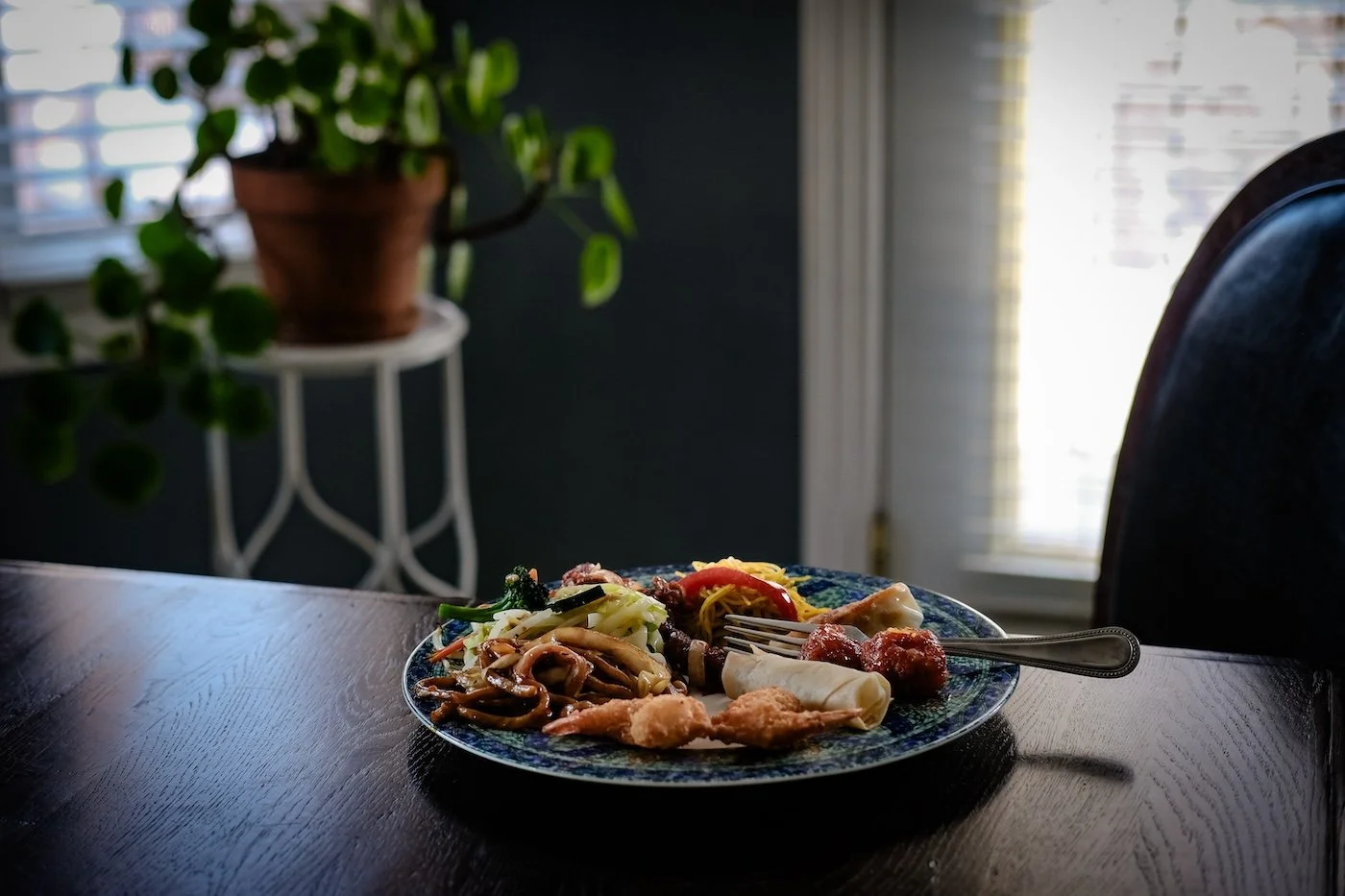A Little Bit of Everything
We’ve all heard this line, “I’ll have a little bit of everything.” It’s one thing to take it and another to have it dished out to us. And here’s the song by Dawes, which starts in a pretty tough way, CW. It made me think of the people I know who ended their lives (my brother another lifetime ago), and all the people I talked to in the previous incarnation of my job about wanting to call it quits, to die, and trying to get them help. Sometimes in the early stages, sometimes late. Sometime I know I made a difference. Once I had no idea, a student over a year after I taught a class they were in, back when I did some teaching. That still hurts. And sometimes you just never know. We are so lightly here. The Dawes song goes like this:
{If this doesn’t show up in the newsletter version here’s the link}
Me, I’m the old man in the buffet line:
“I want a little bit of everything
The biscuits and the beans
Whatever helps me to forget about
The things that brought me to my knees
So pile on those mashed potatoes
And an extra chicken wing
I'm having a little bit of everything”
The way that our sadnesses and our happinesses, our lives, are all just a little bit of everything. We can take a little bit of everything, but sometimes it’s having to take a little bit of everything that slowly does us in. We cave. Life is always little by little every which way. Life is in the details, in the specifics.
And this is a lot of what my book, Apples on a Windowsill, is about. The details of a life, of still lifes — that intersection. It is also in the category, relationship-lit, and the narrative which can be pieced together in the (un)connected/standalone essays has to do with how the F do women make a creative life for themselves. Like, what is the narrative now, what are the possibilities? And also what are the obstacles in the 21st century…
I recently finished reading Leslie Jamison’s Splinters in which I am interested from SO many angles. What happens if you were to read her book along with mine? We wrote them, by the sounds of it over approximately the same timeline, the pandemic intervening and inserting itself into the last third of our books, really. Hers is more divorce-lit and mine more marriage-lit, but they intersect in the category — women writers narrative-lit, perhaps. There are a ton of reviews of the Jamison book; she’s a phenom, a bestseller, a literary personage. Me not so much. But that’s also fine, another path. Another path.
There is so much said in the book — it is full of the “specifics” for which Jamison’s style is so well known. They’re, well, a lot. And if you read it quickly, they’re a bit overmuch. Still, I appreciated her details, her overwhelming specificity, because life is actually like that if you’re looking and paying attention and feeling and thinking. And of course, I’m for that. I liked how in the LA newspaper, the writer, Lisa Locascio Nighthawk, connects a line between the Jamison book and blogs like Dooce from the 2000s which everyone I know who was blogging back then read. From the LA Review of Books:
“Blogs rarely get their due in discussions of literary nonfiction. Yet it’s hard to ignore how closely Jamison’s warts-and-all account of motherhood hews (tonally, at least) to the popular output of 2000s mommy bloggers like Heather Armstrong, whose website prioritized candor and emotional honesty over smooth edges.”
The writer also says,
“But what makes Jamison’s memoir remarkable is its happy ending. Seemingly to its author’s surprise—although really in demonstration of her skill—the book provides a record of Jamison shrugging off a prewritten life and embracing the process of discerning her own.”
I want to talk about this book at greater length, but I also want to sit with it a while. There are parts of it I loved, and parts of it I loved less, and parts that I thought were too much and then not enough and then wondered about the unsaid, the too much said. The way that a writer of such a narrative might make various life choices based on the narrative they were writing, maybe. and maybe not? We don’t know. There’s all this stuff that we, the readers, don’t get to know, but get to wonder about. And that’s the point really. We’re trying to figure out where our own narrative which we are still writing in our heads and hearts fit into such a book. Are we richer or poorer, how do we or how did we keep our creative life going amidst all the lifey-ness of life? What chances did she take and what obstacles were overcome? What was given up? How? Really, how? do any of us find a way to make a life in art? How do we afford it, in all senses of the word?
And here we are, closer to home in Canada, with another re-imagining, tossing out of the romance plot, with Kathryn Kuitenbrouwer’s Wait Softly Brother. I read this one on the plane to and from my recent book launch in Toronto. Longlisted for the Giller, CBC has this to say of the novel/autofiction:
“After twenty years of looping frustrations Kathryn walks out of her marriage and washes up in her childhood home determined to write her way to a new life. There she is put to work by her aging parents sorting generations of memories and mementos as biblical rains fall steadily and the house is slowly cut off from the rest of the world.”
Kuitenbrouwer comes up against the fact of an affair that happened before their marriage, but says, “it shook me to think that the whole edifice had been built atop a secret. That I did not have all the information.” It left her feeling “skinless.” And she says, “you can only be not-yourself for so long before it becomes untenable. I did not leave to hurt anyone. I left for me — because anger had almost eaten me.”
Within the narrative, there is also a reconfiguring, a questioning about narrative itself. She says:
“It is true that if you start to scratch at the threads of any narrative, you discover it is just another enchantment. You discover there is no such thing as realism. All of it just made up. All of life, all of everything.”
And then, “No one ever talks about how hard it is to start a story over again.”
She also says, “What good will dredging that up do me? But there is no going past a problem, only through. My dreams and my writing fingers know this. They are the body’s wisdom speaking.” And this is followed by something that spoke to me: “But what a drag insomnia is — I’m so bleary headed, so exhausted.”
So, I read both Jamison’s book and Kuitenbrouwer’s and then got the book that I refer to all the time out and which I’ve likely over-quoted from in this space. But Anne Bogart’s What’s the Story, goes so well with these books. In it, she says, “I believe that how I describe my life matters not only to my own experience but also to the experiences of others.” Anyway, please buy a copy so I can justify the fact that I mention it all the time, hey? :)
I am a fan of Dina Litovsky’s photography and also her newsletter, and it seems to be just another way of looking at how tricky it is to be a woman and live a creative life. Maybe in some ways it’s more difficult than ever. She posts this amazing photograph of herself, and this:
“The comments that I received under this image reminded me that I should never take my mostly positive experiences as a woman photographer for granted. Many noted I was holding the camera wrong and doubted that I was, in fact, a photographer. Others thought I was photoshopped onto the lava background. And some inquired if I had an OnlyFans page. "The lava is hot and so is she," was one of the more anodyne examples of such commentary. Needless to say, all of these were left by men.”
An essay that I read just while putting this post together is a must read by my co-reader in Toronto, Barbara Tran. (Her book of poetry Precendented Parroting, too, please).
Her essay ends:
“As Diane di Prima writes, “NO ONE WAY WORKS, it will take all of us / shoving at the thing from all sides.”
We must harness everything we have, everything we do. We must use every part of our books as bridges, leave no margins. We must build belonging. Whose art will grace the cover? Whose heart could use some grace in the acknowledgments? Under whose auspices and with what other writers will we read? Where will we eat cake? All of it matters. We must pursue every bridge-building opportunity a book offers and make use of these as if our lives depend upon it. Because they do.”
I’m still also reading Exhausted by Anna Katharina Schaffner, and it seems to hold so much of what I need. I wrote in a previous post about it, and how she says our burnout is tied to “the stories we tell about our exhaustion” and that these matter because “they shape our experience of it and the actions we take to counter it.” She believes in drawing on “mixed mental arts” to combat our fatigue — coming at it through the “healing power of philosophical reflections and historical and sociological insights.” Our exhaustion, in the end, is a thing that might protect us — it may cause us to change our lives for the better, or to at the very least compel us to regroup, reflect. And so, this book is really helping me navigate my life right now, my new day job situation, my brain situation, creative life, burnout life, and all of this amid the horrific news of the day. We can of course keep going back to Virginia Woolf’s, “Now what food do we feed women as artists upon?” Which I quoted in my first book, ten thousand years ago. And now thinking, as Barbara above quotes Diane di Prima, how do we do all this, just get the basics to exist, the food we need to eat, and shove at things from all sides?
As part of my launch reading, I’ve had people bring things to a communal table, and bring that to the making of a still life, and I know I want to work more with that idea, at a larger scale. So, more to come on that…..








